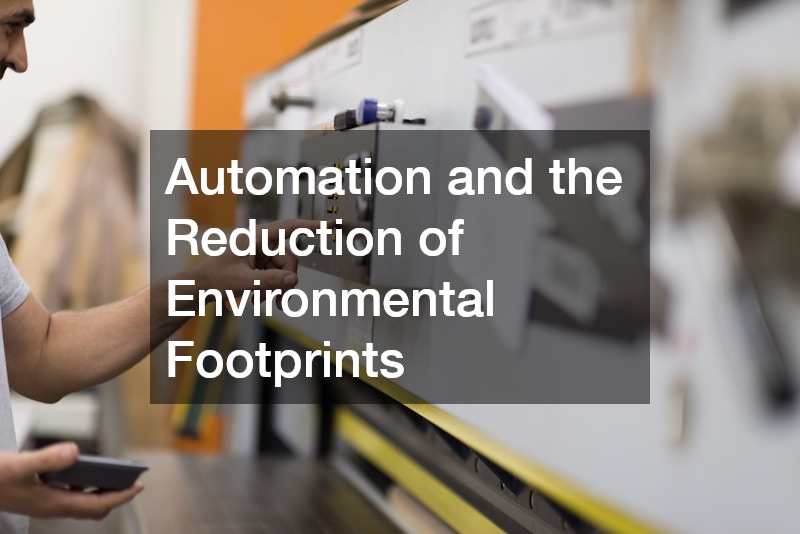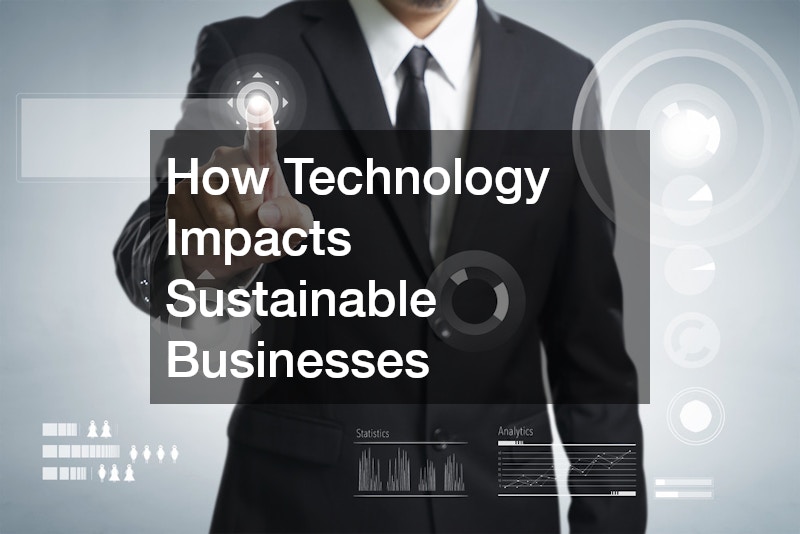How Technology Impacts Sustainable Businesses
Technology plays a pivotal role in the modern business landscape, particularly in the pursuit of sustainability. Australian companies are increasingly leveraging advanced technologies to minimise their environmental footprint while maximising operational efficiency. With heightened awareness of climate change and evolving consumer expectations, these innovations offer solutions to reduce environmental impacts while enabling sustainable practices that align with regulatory requirements. From automation to AI-driven systems, technology sits at the core of sustainable business strategies, enabling resource optimisation, emissions reductions, and increased transparency.
Technology and Sustainable Business Practices
The role of technology in fostering sustainable business practices is especially significant in industries with high environmental impacts. By integrating eco-friendly technologies, businesses can cut waste, conserve energy, and shrink their carbon footprints. For instance, energy and emissions tracking solutions allow organisations to identify inefficiencies and implement improvements.
Beyond environmental benefits, technology fosters stakeholder confidence, ensures compliance with shifting regulatory landscapes, and enhances operational efficiencies.
For example, a waste management business that handles septic tanks or cesspools can significantly reduce its environmental risks using advanced pumping and filtration systems. These innovations prevent contamination of water sources and ecosystems while improving service quality. By cutting downtime, reducing energy usage, and lowering operational costs, such technologies advance both sustainability and profitability.
Advancing Energy Efficiency Through Innovative Technologies

Energy efficiency has become a cornerstone of sustainability for many businesses. Advances in technology, such as smart systems, renewable energy solutions, and data-driven tools for energy management, have revolutionised how organisations approach energy efficiency. These technologies enable real-time monitoring, allowing businesses to make adjustments that lower both environmental impacts and costs.
Innovations like energy-efficient machinery and building management systems help reduce emissions while supporting broader sustainability goals.
Consider a professional business coach operating in Australia. By integrating energy-efficient tools such as digital platforms, they can conduct virtual coaching sessions that eliminate the need for travel, reducing fuel consumption and emissions. These measures not only align with sustainable practices but also help organisations improve their bottom lines.
Digital Solutions for Sustainable Supply Chains
Digital solutions are transforming supply chains, enabling them to become more sustainable and efficient. Technologies such as real-time analytics, automation, and digital tracking systems allow businesses to optimise resource use, reduce wastage, and enhance transparency. These tools ensure that sustainable practices are maintained throughout the supply chain, from sourcing raw materials to delivering finished products.
For example, Australian companies can adopt tools like automated inventory systems and IoT-enabled monitoring devices to streamline supply chains. A construction firm might use IoT technology to monitor concrete curing processes, reducing energy consumption and emissions. Such practices align operational efficiency with environmental responsibility.
Automation and the Reduction of Environmental Footprints

Automation is a key driver of environmental sustainability across industries. Automated systems reduce resource consumption, energy use, and waste by streamlining complex processes. Tasks that traditionally required significant energy and time are now handled with precision, leading to lower environmental impacts.
Automation also enhances resource management by increasing accuracy and minimising the risks of overuse or waste.
In industries such as building remediation, automation has transformative potential. For example, automated mixing systems for rendering materials ensure precise usage, reducing waste. Similarly, digital scheduling tools minimise the need for on-site visits, cutting down transportation emissions. Such applications demonstrate how automation supports environmental sustainability while improving efficiency.
Data Analytics: A Tool for Sustainable Business Growth
Data analytics provides businesses with powerful insights to support sustainable growth. By analysing data on energy use, resource consumption, and waste management, organisations can optimise their operations to achieve environmental and economic benefits. Predictive analytics, for example, enables businesses to anticipate demand, avoiding overproduction and resource overuse.
For a sandblasting business, data analytics can provide significant advantages. By monitoring energy and material consumption, companies can identify areas of inefficiency. Additionally, analytics can track equipment performance, ensuring optimal operation and minimising emissions. Leveraging data allows businesses to reduce their environmental footprints while improving profitability and service quality.
Cloud Computing and Its Contribution to Sustainability
Cloud computing has become a vital enabler of sustainability across diverse sectors. By reducing the need for physical infrastructure and energy-intensive on-site servers, cloud solutions help businesses lower their carbon footprints. Remote work capabilities supported by cloud-based collaboration tools further enhance sustainability by minimising travel requirements.
For example, an outdoor kitchen design company in Australia could use cloud-based software to manage projects and client interactions. Digital blueprints reduce the need for paper, while real-time updates improve communication and reduce delays. Such practices not only streamline operations but also contribute to environmental sustainability.
AI and Sustainable Resource Management
Artificial intelligence (AI) is revolutionising resource management by providing businesses with tools to maximise efficiency and minimise waste. AI-powered systems can analyse data, predict trends, and make real-time adjustments to optimise resource use.
In the plumbing industry, AI has significant potential. AI systems can monitor water usage, detect leaks, and predict maintenance needs, helping to conserve water and reduce energy consumption. By integrating AI-driven solutions, Australian plumbers can offer environmentally friendly services, contributing to water conservation and sustainability.
Product Innovation for Sustainable Development
Technological innovation is driving the development of sustainable products, meeting consumer demand for eco-friendly options. From production to disposal, technology enables businesses to minimise environmental impacts throughout a product’s lifecycle.
For example, roofing contractors can leverage innovations like solar-integrated shingles and recyclable materials. Such products reduce energy consumption while enhancing building sustainability. These advancements allow Australian contractors to meet client needs while contributing to a more sustainable construction industry.
IoT Technologies for Corporate Sustainability
The Internet of Things (IoT) is reshaping corporate sustainability by connecting devices and systems to gather real-time data. This data enables smarter decision-making, improving resource management and reducing unnecessary energy consumption.
For instance, a forklift repair business could use IoT sensors to monitor equipment performance and energy usage. Proactive maintenance prevents breakdowns, reduces energy waste, and extends the lifespan of machinery. Such practices highlight the role of IoT in achieving sustainability goals while optimising operations.
Sustainable Business in an Age of Technology
As technology continues to evolve, its role in promoting sustainability becomes increasingly evident. From resource management to automation and sustainable product development, technology empowers businesses to minimise environmental impacts while maintaining operational efficiency.
In industries like demolition, modern machinery and digital tools enable companies to manage waste more effectively and reduce environmental damage. Precision-controlled demolition equipment minimises waste, while advanced planning tools help mitigate environmental impacts. These practices ensure a sustainable future for industries traditionally associated with high environmental footprints.
Conclusion
Technology is a powerful enabler of sustainable business practices across industries. Innovations in automation, AI, and data analytics are equipping organisations with tools to reduce waste, conserve resources, and align with environmental goals. Businesses that embrace these technologies are well-positioned to meet the rising expectations of Australian consumers and regulators.
By adopting cutting-edge solutions, organisations can achieve sustainability goals while enhancing profitability, paving the way for a greener and more responsible future.

Post Comment